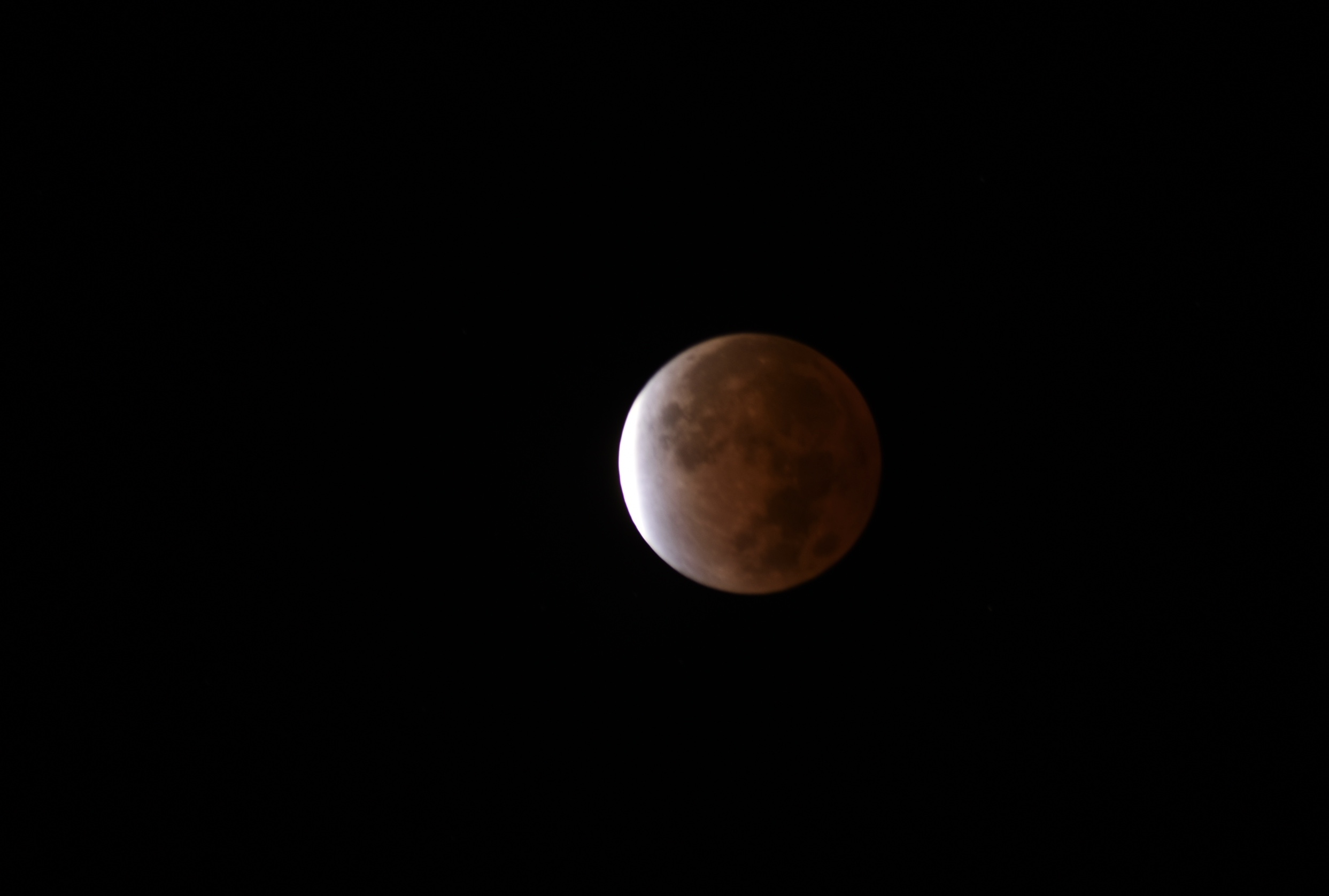
Get Ready for November’s Partial Lunar Eclipse
Set your alarm for very early Friday morning (or just stay up Thursday night). All of North America will have a front-row seat to a nearly total lunar eclipse. The Full Moon will be just over 97% eclipsed at mid-eclipse (3:02 am Central Time, which is 4:02 Eastern Time, 2:02 Mountain time, etc.) when the Moon is situated high in the western sky for most those of us in the U.S. It will be in the constellation Taurus, whose brightest star is Aldebaran. Orion will also be easily visible to the east of Taurus. It’s two brightest stars are Betelgeuse and Rigel. The three stars in the “belt” of Orion will be easy to see as well.

The Moon will begin entering the deepest part of Earth’s shadow about 1:20 am Central Time and exit the deepest part of the shadow around 4:47 am Central Time. You can find a details about the timing of the eclipse for your location at the link below.
Because the Moon will be close to its farthest point, or apogee, from Earth (the Moon’s orbit is elliptical), the Moon will appear slightly smaller than average and this will result in the longest partial lunar eclipse since 1440, when the Incas were building Machu Picchu. The next time a partial eclipse will last this long will be on February 8, 2669. However, don’t get too fixated on the “longest eclipse” talk. This is the longest partial eclipse since 1440. Total lunar eclipses are longer because in those instances the Moon passes through the center of Earth’s shadow, which is wider than the area it passes through during a partial eclipse.
More information specific to your location can be found at the Time and Date website https://www.timeanddate.com/eclipse/lunar/2021-november-19
